#forgeries
Text
Ontario Police Have Arrested Eight People Suspected of Forging Thousands of Artworks Attributed to Indigenous Artist Norval Morrisseau
Forced child labor, murder, and a member of the Barenaked Ladies all factor into the story around the elaborate forgery ring.
Taylor Dafoe, March 6, 2023

Artist Norval Morrisseau in a photo from 1977. Photo: Graham Bezant/Toronto Star via Getty Images.
Eight people in Ontario, Canada have been arrested in connection to an art forgery ring responsible for producing and selling paintings falsely attributed to the late Indigenous artist Norval Morrisseau.
The suspects now face 40 total charges related to forgery, fraud, and criminal organization, according to information shared by the Ontario Provincial Police (OPP) last week.
The arrests, made on March 1, mark the culmination of a multi-year investigation into the elaborate forgery scheme—the full story of which also includes forced child labor, murder, and a member of the Barenaked Ladies.
Considered by many to be the grandfather of contemporary Indigenous art in Canada, Morrisseau—or Copper Thunderbird, as he was sometimes known—was a member of the Bingwi Neyaashi Anishinaabek First Nation who fused Indigenous lore, mystical symbols, and political messages into his vibrantly colorful work. When he died in December 2007, Morrisseau left behind a rich and seemingly abundant body of work—though how much of that work is authentic remains somewhat of a mystery
The probe into fake works by the artist began in 2019, when Detective Sargent Jason Rybak of the Thunder Bay Police Service (TBPS) in northwestern Ontario was researching the death of a man named Scott Dove.

“During that, [Dove’s] mom called me and asked if I had seen this documentary called There Are No Fakes, which had information on the murder of her son,” Rybak recalled in an interview last week with CBC/Radio-Canada.
Released earlier that year, the documentary begins with Kevin Hearn, keyboardist and guitarist for Barenaked Ladies, who had filed a complaint against a Toronto-based gallery alleging that a Morrisseau painting he had purchased there was a fake.
Hearn’s lawsuit had, at the time, been dismissed by a local court, but the film found evidence of a forgery ring that likely produced the artwork he owned, and suggested that they may have even been created by underage forgers in sweatshop-like conditions. (In September 2019, the ruling in Hearn’s case was overturned by the Ontario Court of Appeal and the rockstar was awarded $60,000 in compensation.)
After watching There Are No Fakes, Rybak reached out to Hearn. “That really was the jump-off point for this investigation,” the detective said.
Not long after, TBPS officers obtained a warrant to search the home of Gary Lamont. There, police “started seizing painting after painting after painting,” Rybak explained. “We quickly realized the magnitude of what we were getting ourselves into.” It was at that point that the team behind the investigation called the OPP for help.

A suspected Morrisseau forgery seized by police. Courtesy of the OPP.
Lamont is one of the eight suspects charged last week. The others are David John Voss, Diane Marie Champagne, Linda Joy Tkachyk, Jeffrey Gordon Cowan, James White, David P. Bremnerand, and Benjamin Paul Morrisseau—a nephew of the late artist.
Together, the suspects represent three different, yet connected groups of Morrisseau forgers. The first was launched back in 1996, while the others were established in 2002 and 2008, respectively. At times, all three rings collaborated.
Police believe Morrisseau made for a lucrative target both because he was an important artist and a prolific one.
The forgers “knew his lifestyle,” Rybak said. “They knew that he had struggles. They knew that he never kept a list of his paintings… At times [Morrisseau] would just give paintings away to people for milk and and eggs, and so they knew that there was no way in their mind of tracking legitimate paintings.”
To determine which paintings were fake, the investigative team took a “multifaceted approach,” according to OPP detective inspector Kevin Veillieux.
“We conducted a wide range of witness interviews that provided very valuable information,” Veillieux told CBC. “We had reached out to different groups that had the ability to do certain forensic testing for us.”
In total, investigators seized more than 1,000 fake Morrisseau artworks from a variety of sources, including collectors, galleries, and museums. Some were purchased for “tens of thousands of dollars,” according to police.
And there are likely many more Morrisseau forgeries still out there. Some even suggest there might be 10 times as many fakes as there are genuine Morrisseau artworks on the market. Veillieux encouraged owners of other suspected imitations to seek legal counsel before going to the police.
Artnet News
Comment from me regarding the last paragraph of this article.
“And there are likely many more Morrisseau forgeries still out there. Some even suggest there might be 10 times as many fakes as there are genuine Morrisseau artworks on the market”. This reminds me of a joke a dealer friend of mine used to tell. It was also a commentary on “savvy” American tourist/collectors. Regarding the extremely prolific and easy to forge landscapes by Camille-Corot he said “of the 15,000 documented Corot paintings in the world…..25,000 of them are in the United States”
66 notes
·
View notes
Photo

What did the Bible originally say?
"It is one thing to say that the originals were inspired, but the reality is that we don't have the originals - so saying they were inspired doesn't help me much, unless I can reconstruct the originals."
"Not only do we not have the originals, we don't have the first copies of the originals. We don't even have copies of the copies of the originals, or copies of the copies of the copies of the originals. What we have are copies made later - much later. In most instances, they are copies made many centuries later. And these copies all differ from one another, in many thousands of places."
-- Bart D. Ehrman, Misquoting Jesus
#Bart D. Ehrman#Bart Ehrman#Misquoting Jesus#christianity#jesus christ#bible#bible study#origin of the bible#anonymous authors#copies of copies#bible forgeries#forgeries#religion#word of god#the word of god#inspired word of god#religion is a mental illness
139 notes
·
View notes
Text
“Not even the artist himself could have imagined the scale of the fraud, which in both the number of forged paintings and the profits made from their sale was likely the biggest art fraud in history—not in Canada or North America but anywhere in the world."
2 notes
·
View notes
Text
3 notes
·
View notes
Text
Discovering a Forgery: Jupiter's real moons and U-M's fake Galileo manuscript
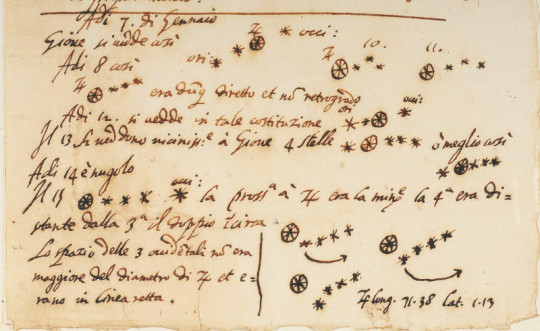
Lower half of a one-page manuscript falsely attributed to Galileo Galilei. Allegedly, the document includes a draft letter to the Doge of Venice (1609) and Galileo's telescopic observations of the moons of Jupiter from January 7 to January 15, 1610.
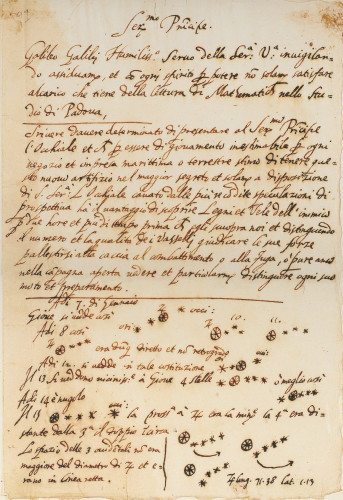
Allegedly, the document includes a draft letter to the Doge of Venice (1609) and Galileo's telescopic observations of the moons of Jupiter from January 7 to January 15, 1610.
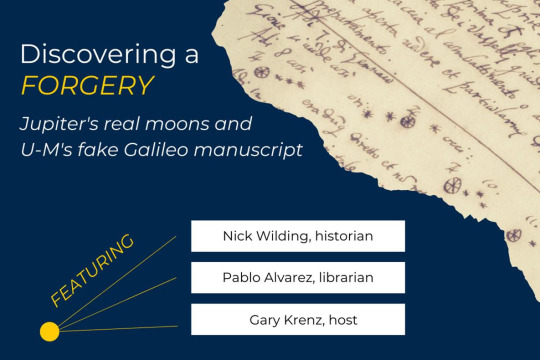
We are pleased to invite you to a panel regarding the discovery of the forgery of our Galileo manuscript October 6 at 7p. Hosted by the U-M Detroit Observatory in Ann Arbor, Nick Wilding (Georgia State University) and Pablo Alvarez (University of Michigan Library) will be discussing various aspects surrounding this extraordinary document, including its alleged historical significance, the fascinating process establishing it as a 20th-century fake, and the lessons that we can all learn from the unmasking of this forgery.
Register to attend in person at the Detroit Observatory (1398 East Ann Street, entrance on Observatory St.), or register to attend virtually.
We hope you’ll be able to join us
Read more!
#galileo#forgery#events#special collections#libraries#libraries and archives#archives#archival collections#forgeries#astronomy#History of Astronomy#observatory
27 notes
·
View notes
Text
Enoch, an apocryphal text thought to be written sometime between the third century B.C. and the second century A.D., is named for the biblical Noah’s great-grandfather. One reason Langlois didn’t know much about the book was that it didn’t make it into the Hebrew Bible or the New Testament. Another is that the only complete copy to survive from antiquity was written in an ancient Ethiopic language called Ge’ez.
But beginning in the 1950s, more than 100 fragments from 11 different parchment scrolls of the Book of Enoch, written largely in Aramaic, were found among the Dead Sea Scrolls. A few fragments were relatively large—15 to 20 lines of text—but most were much smaller, ranging in size from a piece of toast to a postage stamp. Someone had to transcribe, translate and annotate all this “Enochic” material—and Langlois’ teacher volunteered him. That’s how he became one of just two students in Paris learning Ge’ez.
Langlois quickly grasped the numerous parallels between Enoch and other books of the New Testament; for instance, Enoch mentions a messiah called the “son of man” who will preside over the Final Judgement. Indeed, some scholars believe Enoch was a major influence on early Christianity, and Langlois had every intention to conduct that type of historical research.
He started by transcribing the text from two small Enoch fragments, but age had made parts of it hard to read; some sections were missing entirely. In the past, scholars had tried to reconstruct missing words and identify where in the larger text these pieces belonged. But after working out his own readings, Langlois noticed the fragments seemed to come from parts of the book that were different from those specified by earlier scholars. He also wondered if their proposed readings could even fit on the fragments they purportedly came from. But how could he tell for sure?
To faithfully reconstruct the text of Enoch, he needed digital images of the scrolls—images that were crisper and more detailed than the printed copies inside the books he was relying on. That was how, in 2004, he found himself traipsing around Paris, searching for a specialized microfiche scanner to upload images to his laptop. Having done that (and lacking cash to buy Photoshop), he downloaded an open-source knockoff.
First, he individually outlined, isolated and reproduced each letter on Fragment 1 and Fragment 2, so he could move them around his screen like alphabet refrigerator magnets, to test different configurations and to create an “alphabet library” for systematic analysis of the script. Next, he began to study the handwriting. Which stroke of a given letter was inscribed first? Did the scribe lift his pen, or did he write multiple parts of a letter in a continuous gesture? Was the stroke thick or thin?
Then Langlois started filling in the blanks. Using the letters he’d collected, he tested the reconstructions proposed by scholars over the preceding decades. Yet large holes remained in the text, or words were too big to fit in the available space. The “text” of the Book of Enoch as it was widely known, in other words, was in many cases mistaken.
Take the story of a group of fallen angels who descend to earth to seduce beautiful women. Using his new technique, Langlois discovered that earlier scholars had gotten the names of some of the angels wrong, and so had not realized the names were derived from Canaanite gods worshipped in the second millennium B.C.—a clear example of the way scriptural authors integrated elements of the cultures that surrounded them into their theologies. “I didn’t consider myself a scholar,” Langlois told me. “I was just a student wondering how we could benefit from these technologies.” Eventually, Langlois wrote a 600-page book that applied his technique to the oldest known scroll of Enoch, making more than 100 “improvements,” as he calls them, to prior readings.
His next book, even more ambitious, detailed his analysis of Dead Sea Scrolls fragments containing snippets of text from the biblical Book of Joshua. From these fragments he concluded that there must be a lost version of Joshua, previously unknown to scholars and extant only in a small number of surviving fragments. Since there are thousands of authentic Dead Sea Scrolls, it appears that much still remains to be learned about the origins of early biblical texts. “Even the void is full of information,” Langlois told me.
— How an Unorthodox Scholar Uses Technology to Expose Biblical Forgeries
#chanan tigay#michael langlois#how an unorthodox scholar uses technology to expose biblical forgeries#history#religion#christianity#judaism#canaanite religion#languages#linguistics#translation#palaeography#forgeries#bible#torah#dead sea scrolls#technology#digital technology#canaan#book of enoch#aramaic#ge'ez
3 notes
·
View notes
Text
Chapter 350: Letter Perfect
David stared intently from his hotel suite at the cityscape stretched out before him. It was late, but the streets still echoed with the sound of passing cars while bright lights and neon signs flashed from all angles.

He had been in New York for less than a week, and already new opportunities were opening before him as if fate was working in his favor. David considered each move carefully, knowing that any mistake might cost him greatly.

A knock startled him out of his thoughts, and he walked quickly toward the door. Granger was right on time, and David looked forward to seeing what the man had to show him. As one of the world’s best document forgers, Granger’s services were expensive, but well worth it.

“Come in, Roland,” David said, ushering the man inside. “I’ve been expecting you. Do you have them?”
“Of course,” the man replied. He quickly cleared the table and carefully placed the three letters there for David, who immediately began examining them.

“It wasn’t an easy task, though,” Granger said. “Handwritten letters can be the most difficult to replicate with any accuracy. Then there’s the paper itself, which has to be true to the period. I had a devil of a time matching these sheets, since they’re Westonian, but finally managed to locate some through a source of mine in Paris.”

“Good, good,” David said, carefully laying the final letter back on the table and turning to his guest. “You included all of the passages I requested?”
“Yes, although their significance escapes me,” Granger said.
“Your understanding is not required,” David replied. “Only your skill.”

He turned back to the letters .
“These should work quite nicely for my purposes, Roland,” David said. “I’ll transfer your payment now. The Cayman Islands account, as usual?”
“That’ll do,” Granger said, nodding.

“Of course,” David said, sitting down behind his laptop and quickly transferring fifty thousand Westonian dollars. “I appreciate your help.”

“You are quite welcome, as always, David,” Granger said, confirming the deposit on his phone. Then he turned and walked toward the door. “Until next time, then.”

Having seen Granger out, David turned and smiled. The letters were perfect. While the correspondence Andrew had dropped off originally contained no real proof of the young man’s ancestry that would impact his claim on the Earldom of Buckland, these altered versions would hold up nicely in any Westonian court.
He walked back to the window and looked back out over the city.

I never thought I would return to Weston again, he thought to himself. But now, I’ll return in triumph, and Devon will regret the day he ever tried to cut me out of the inheritance I deserve.
CHAPTER 1 | BEGINNING OF PART 4 | PREV | NEXT
Continent of Oceana | History of Weston | History of Corwyn | History of Torenth | History of Allycia
#ts4 simblr#ts4 royalty#ts4 royal legacy#ts4 royal family#ts4 royal simblr#ts4 story#ts4 monarchy#principality of weston#david grey#hatching a plan#forgeries#Chapter 350#Letter Perfect#oceana stories
5 notes
·
View notes
Text
Or if it's read by Orange Julius Caesar: "One Timothy."
#bart ehrman#bible scholarship#letters of paul#forgeries#forgery#antiquity#christianity#first timothy#timothy#who wrote the bible?#misquoting jesus
0 notes
Text
At the Sunday Times, [Rupert] Murdoch moved Giles to the new position of "editor emeritus". When Giles asked what the title meant, Murdoch informed him that "It's Latin, Frank; the e means you're out and the meritus means you deserved it."
— 'Hitler Diaries' (Wikipedia). These were forged diaries and documents, purportedly by Hitler. Multiple newspapers, journalists, historians, and collectors were taken in by the forgeries—mostly because they failed to carefully assess the works. Murdoch offered several million dollars to serialise the diaries in his papers.
#forgeries#fakes#art fraud#rupert murdoch#wwii history#historical forgeries#newspaper#journalism#the sunday times#emeritus#editor#quotes#white collar crime
0 notes
Photo
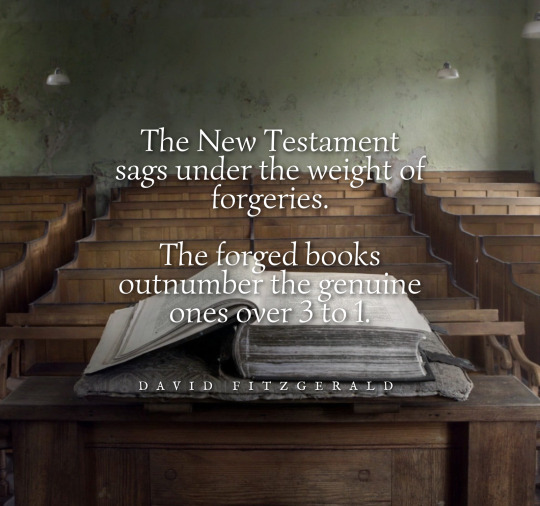
“The New Testament sags under the weight of forgeries.
The forged books outnumber the genuine ones over 3 to 1.”
-- David Fitzgerald
#David Fitzgerald#christianity#bible#bible study#bible forgeries#forgeries#origin of the bible#New Testament#religion#religion is a mental illness
39 notes
·
View notes
Photo

Woman Rocking
FORGERY
A classic painting and reinterpret.
Reinterpretation of La Berceuse by Vincent van Gogh.
0 notes
Text
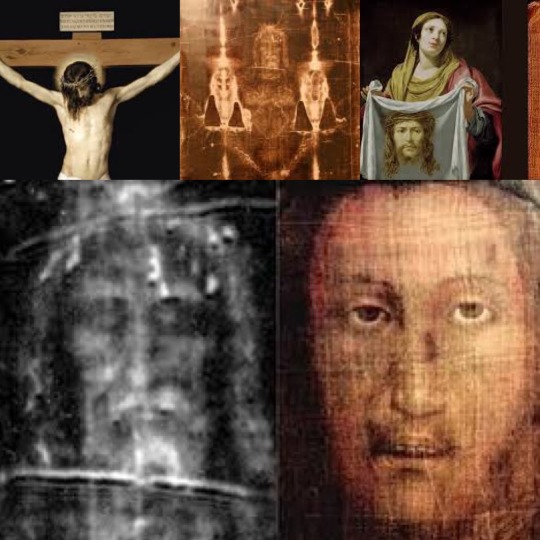
The Cloths of Christ: Holy Relics or Fakes?
Eli Kittim
Don’t be naive. Fakes, forgeries, and frauds are much more prevalent than you might think. Just as the “post-2002” Dead Sea Scrolls are fake, so are many Christian relics. For instance, take the “Titulus Crucis,” a piece of wood. Christian tradition claims that the relic contains a portion of the True Cross. Scientists, however, consider it to be a medieval forgery:
In 2002, the University of Arizona
conducted radiocarbon dating tests on the
artifact, and it was shown to have been
made between 980 and 1146 AD. The
carbon dating results were published in the
peer-reviewed journal Radiocarbon.
— Wiki
The same holds true for many other relics. Yet despite these setbacks, Christian archaeologists continue to make sensational claims that they have found the burning bush, the tomb of Jesus, the house of Peter, the Veil of Veronica (which btw is never mentioned in the canonical Gospels), and the like. They’re doing a great disservice to Christianity by promoting sensationalism and fake news. By advertizing hoaxes, fakes, and forgeries, they’re setting up Christianity to be mocked and ridiculed, and ultimately rejected. Once people realize that these relics are nothing more than fakes, frauds, and forgeries, they would want nothing to do with Christianity. In other words, the veracity of the Christian message is at stake. They’re setting people up to apostatize and deconstruct their faith. This is actually an attack on——not a support of——the Christian faith!
Pious Frauds
The Sudarium of Oviedo cloth——which is believed to be the post-mortem cloth that was wrapped around Jesus’ head, as mentioned in John 20:6–7——has been dated to around 700 AD by radiocarbon dating:
It’s a hoax!
The Manoppello Image of Jesus Christ’s face on a cloth is also a fake:
Most researchers state that, despite fringe
claims of divine origins, the face on the veil
at Manoppello clearly conforms in
appearance to the characteristics of an
artificially-made image and that stylistically
it is similar to images dating to the late
Middle Ages or early Renaissance.
— Wiki
The Shroud of Turin is also a 13th to 14th century hoax:
In 1988, radiocarbon dating by three
different laboratories established that the
shroud's linen material was produced
between the years 1260 and 1390 (to a
95% confidence level). Defenders of the
authenticity of the shroud have questioned
those results, usually on the basis that the
samples tested might have been
contaminated or taken from a medieval
repair to the original fabric. Such fringe
hypotheses have been refuted by carbon-
dating experts and others based on
evidence from the shroud itself, including
the medieval repair hypothesis, the bio-
contamination hypothesis and the carbon
monoxide hypothesis.
— Wiki
However, there was a recent research study on the Shroud of Turin (April 2022) by Dr. Liberato De Caro’s team which used the new “Wide-Angle X-ray Scattering” or WAXS method to determine the age of the shroud. They claim that they found a match with a piece of fabric from c. AD 55-74 from the siege of Masada in Israel. However, it is as yet unknown whether or not the findings are accurate. As far as I know, they have not been independently confirmed or multiply-attested by other laboratories. Dr. De Caro himself noted that his work was simply “evaluated and peer-reviewed by three other independent experts,” including the editor of the journal “Heritage,” which published his findings. But that doesn’t mean that the results were correct, multiply attested, or independently confirmed. It just means that a couple of editors thought that the experiment was worthy of publication. In fact, Dr. Liberato De Caro himself expressed the need for further research, especially “blind” tests to “avoid any possible bias in the data analysis by the authors of the research.” Bottom line, this new study has not yet conclusively refuted the 1988 radiocarbon dating findings by three different laboratories which established that the shroud is a medieval hoax.
As early as 1390, about 35 years after the
Shroud first emerged in France, Pierre
d'Arcis, the Catholic bishop in Troyes, wrote
to Pope Clement VII that the shroud was ‘a
clever sleight of hand’ by someone ‘falsely
declaring this was the actual shroud in
which Jesus was enfolded in the tomb to
attract the multitude so that money might
cunningly be wrung from them.’
— NBC News
The Roman Catholic Church considers the
Shroud to be an icon, not a holy relic.
— NBC News
Now, a new study using modern forensic
techniques suggests the bloodstains on the
shroud are completely unrealistic,
supporting arguments that it is a fake.
— Livescience
‘If you look at the bloodstains as a whole,
just as you would when working at a crime
scene, you realize they contradict each
other,’ Borrini said. ‘That points to the
artificial origin of these stains.’
— Livescience
Enough already with the hoaxes and the
fake news❗️
#relics#artifacts#burialcloth#HolyRelics#forgeries#frauds#TitulusCrucis#ελικιτίμ#fake news#medievalforgeries#radiocarbondating#Elikittim#VeilofVeronica#icons#Fakes#the little book of revelation#WAXS#SudariumofOviedo#bloodstains#Τομικροβιβλιοτηςαποκαλυψης#hoaxes#TheManoppelloImage#shroud of turin#catholic church#LiberatoDeCaro#Piousfrauds#forensictechniques#Christianrelics#religiousrelics#archaeology
1 note
·
View note
Text
Beautiful teen Maya Bijou sucks and fucks her nerdy bestfriend on couch
Culiandome a esta hermosa Colombiana con tetas bien ricas annabellrio
Watch as these cousins fucked secretly, almost caught paola
Cogiendo con mi mejor amiga Lola
Masturbating Is A Workout
having a great honeymoon sex love her moans
Asian office brunette sucking the dude to cum on her breasts
Busty bombshell Chessie Kay wanks two big veiny dicks before threesome
Blindfold Lesbian Oil Massage Leads to Tied Up Edging, Orgasm Denial and Ruined Orgasms: KinkyBabies
Gostosa rebolando a bunda redonda
#inuyashaedit#species#fibromas#brightener#Ampelopsis#Khorma#purline#circum-meridian#Clausiliidae#glugged#quadriad#forgeries#priest-doctor#voltivity#toxicodermatosis#catchpolery#granitiferous#Bogomilian#parleyed#Clerissa
0 notes

